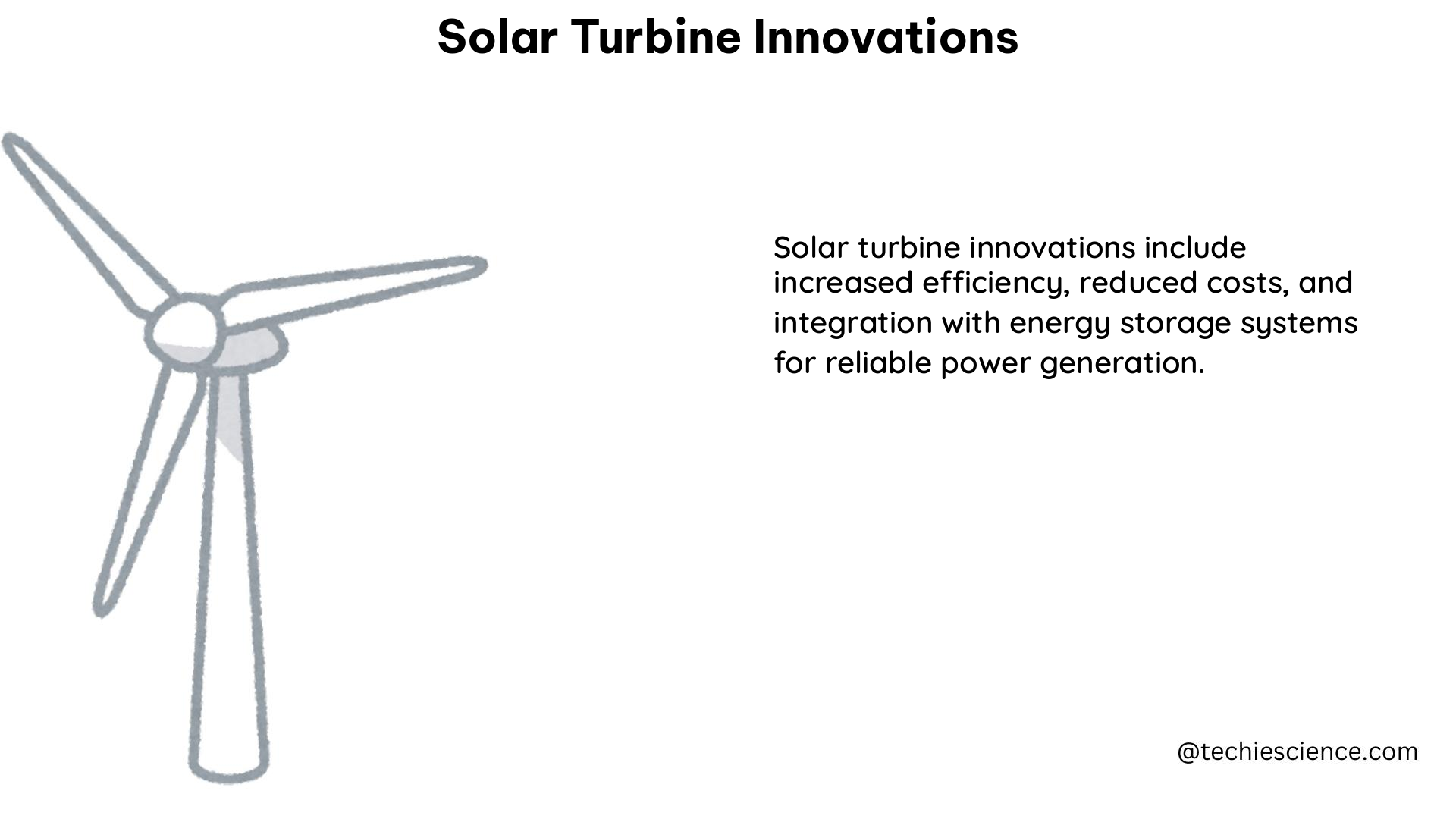Solar turbines are revolutionizing the renewable energy landscape, offering a clean and efficient alternative to traditional power generation methods. These innovative systems harness the power of the sun to drive gas turbines, delivering a sustainable solution that is rapidly gaining traction worldwide. In this comprehensive blog post, we will delve into the cutting-edge advancements that are shaping the future of solar turbine technology.
Advanced Materials for High-Temperature Resilience
One of the key innovations in solar turbine technology is the development of advanced materials that can withstand the extreme operating conditions. Solar turbines typically operate at temperatures ranging from 500°C to 1000°C, which can quickly degrade traditional materials like steel. To address this challenge, researchers have pioneered the use of ceramic matrix composites (CMCs) – a class of materials composed of a ceramic matrix reinforced with fibers.
CMCs offer several advantages over conventional materials:
- Exceptional Heat Resistance: CMCs can maintain their structural integrity and performance at the high temperatures encountered in solar turbines, ensuring reliable and long-lasting operation.
- Lightweight Design: The lightweight nature of CMCs allows for more efficient turbine designs, reducing the overall weight and improving energy output.
- Improved Durability: CMCs exhibit superior resistance to thermal shock, corrosion, and wear, making them ideal for the demanding environments of solar turbines.
The development of these advanced materials has been a game-changer, enabling solar turbine manufacturers to push the boundaries of performance and reliability.
Innovative Manufacturing Techniques

Alongside the advancements in materials, solar turbine technology has also benefited from the adoption of cutting-edge manufacturing techniques. Traditional manufacturing methods can be time-consuming, expensive, and limited in their ability to produce the complex geometries required for solar turbine components.
One of the most promising innovations in this area is the use of 3D printing, or additive manufacturing. This technology allows for the rapid and cost-effective production of intricate parts, enabling solar turbine manufacturers to quickly prototype and iterate on their designs. 3D printing also offers the flexibility to create customized components, tailored to the specific needs of each installation.
In addition to 3D printing, solar turbine manufacturers are exploring other advanced manufacturing techniques, such as:
- Precision Casting: This method allows for the creation of complex, near-net-shape components with tight tolerances, reducing the need for extensive post-processing.
- Automated Fiber Placement: This technique enables the efficient and precise placement of reinforcing fibers in composite materials, optimizing the structural integrity of solar turbine components.
- Hybrid Manufacturing: By combining traditional subtractive methods (e.g., milling, turning) with additive processes, manufacturers can achieve the best of both worlds, leveraging the strengths of each approach.
These innovative manufacturing techniques are driving down costs, improving production efficiency, and enabling the creation of more advanced solar turbine designs.
Impressive Technical Specifications
Solar turbines have made significant strides in terms of their technical capabilities, making them an increasingly attractive option for power generation. These systems typically have a power output ranging from a few hundred kilowatts to several megawatts, with the largest models capable of producing up to 70 MW of electricity.
One notable example is the Taurus 70 gas turbine, used at the Blackstone Power Plant at Harvard University. This turbine boasts an impressive efficiency of around 40%, which is among the highest in the industry. Additionally, the Taurus 70 is equipped with advanced digital solutions, such as the InSight Platform, which enables real-time monitoring and optimization of the turbine’s performance.
Another innovative application of solar turbine technology is the Pipeline Optimization app, also hosted on the InSight Platform. This app utilizes machine data and real-time compressor performance algorithms to optimize the operation of compression equipment along entire gas transmission pipelines. By doing so, it can help maximize plant efficiency and reduce the carbon footprint of natural gas transportation.
These technical advancements, combined with the inherent benefits of solar energy, make solar turbines an increasingly attractive option for power generation, particularly in regions with abundant solar resources.
Conclusion
The world of solar turbine innovations is rapidly evolving, driven by the relentless pursuit of clean, efficient, and sustainable energy solutions. From the development of advanced materials to the adoption of cutting-edge manufacturing techniques, the solar turbine industry is pushing the boundaries of what is possible.
As we continue to explore these innovations, we can expect to see even more impressive technical specifications, improved reliability, and greater integration with other renewable energy technologies. The future of solar turbine technology is bright, and it holds the promise of a more sustainable and resilient energy landscape for generations to come.
Reference:
– Solar Turbines
– ASME Digital Collection
– National Renewable Energy Laboratory

The lambdageeks.com Core SME Team is a group of experienced subject matter experts from diverse scientific and technical fields including Physics, Chemistry, Technology,Electronics & Electrical Engineering, Automotive, Mechanical Engineering. Our team collaborates to create high-quality, well-researched articles on a wide range of science and technology topics for the lambdageeks.com website.
All Our Senior SME are having more than 7 Years of experience in the respective fields . They are either Working Industry Professionals or assocaited With different Universities. Refer Our Authors Page to get to know About our Core SMEs.